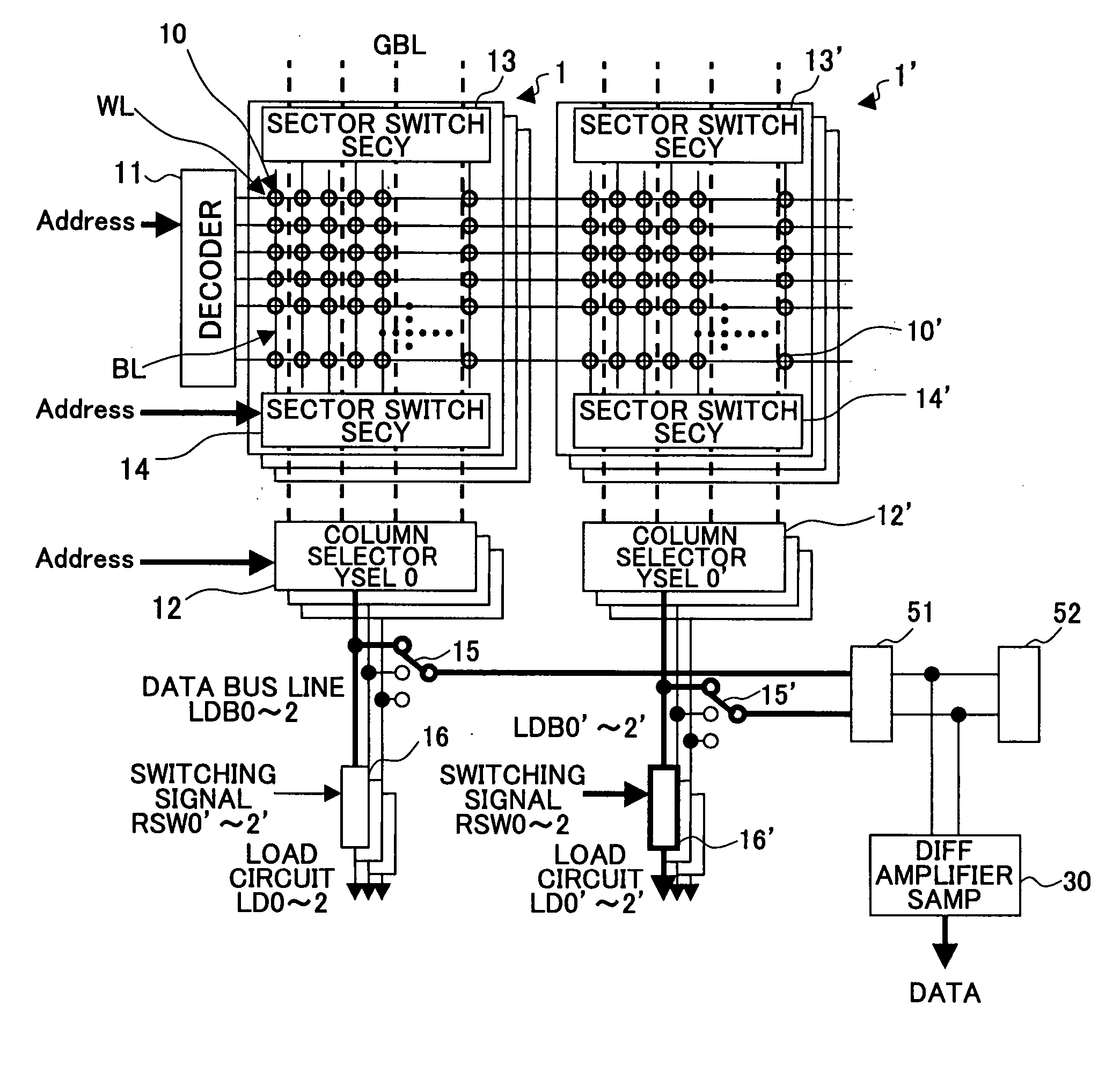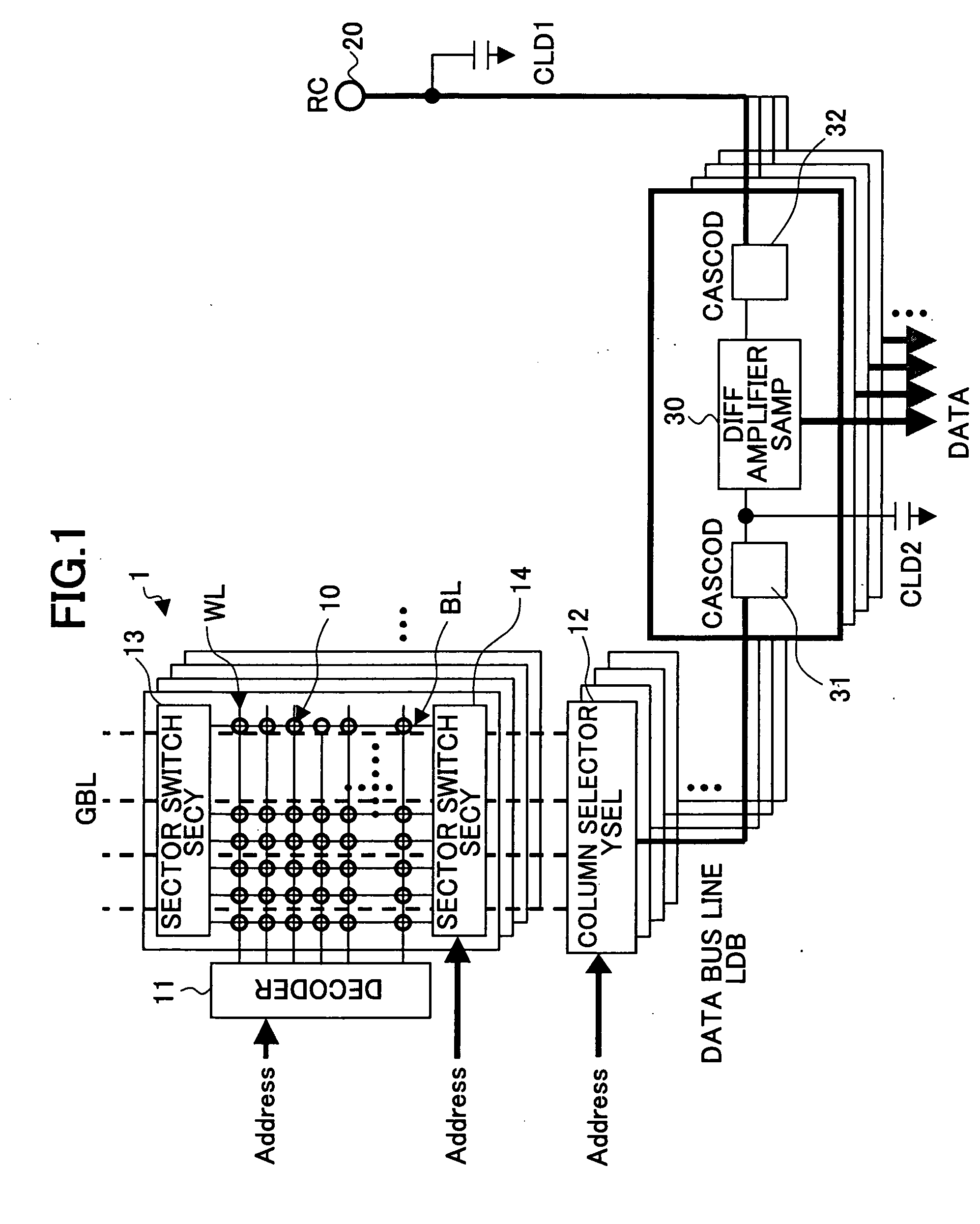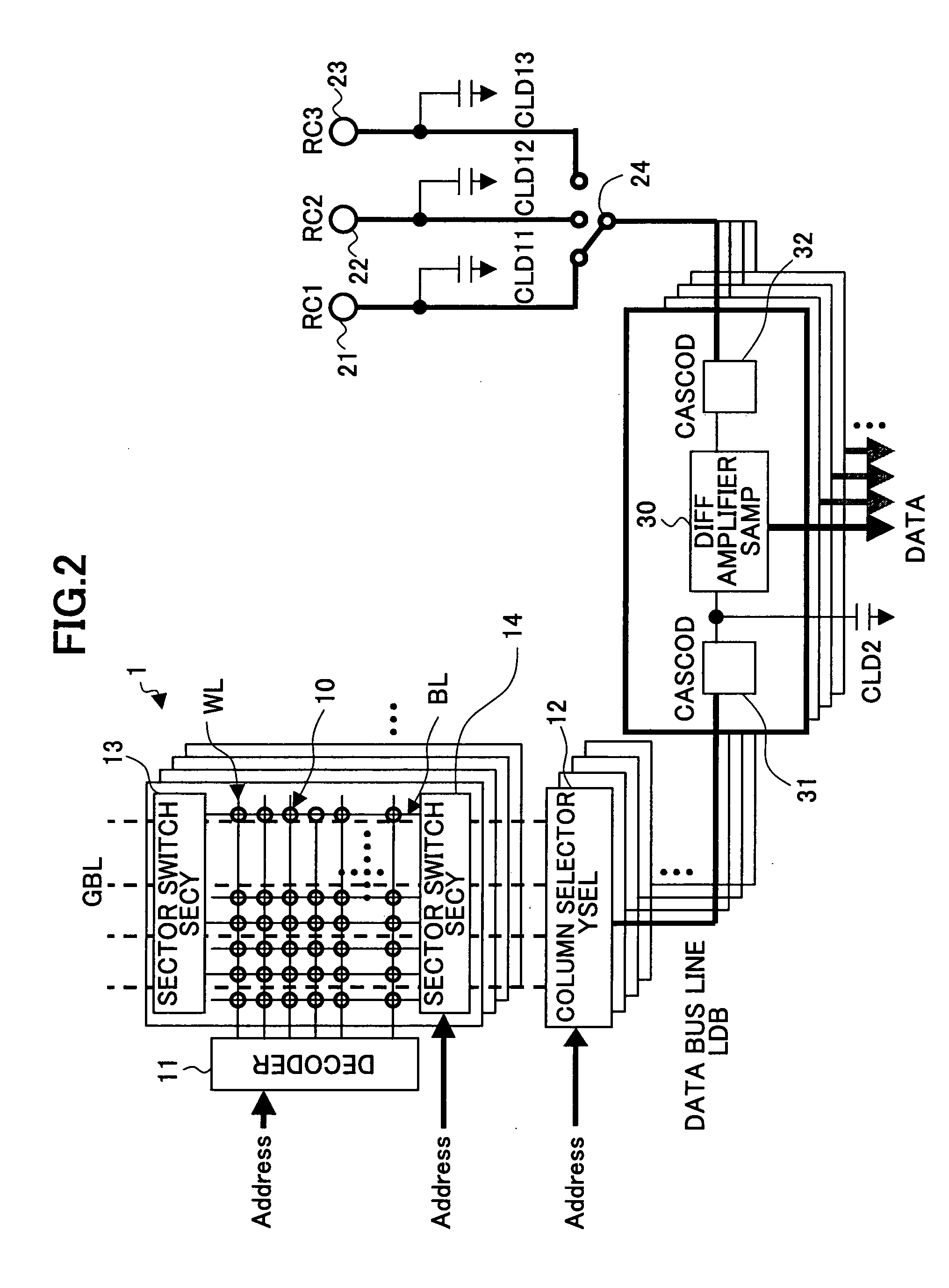Nonvolatile semiconductor memory device
a semiconductor memory and non-volatile technology, applied in static storage, digital storage, instruments, etc., can solve the problems of large differences in on-chip parasitic capacitance in the same chip, large differences in wafer surface differences, etc., and achieve high-speed reading operation of memory cell information.
- Summary
- Abstract
- Description
- Claims
- Application Information
AI Technical Summary
Benefits of technology
Problems solved by technology
Method used
Image
Examples
Embodiment Construction
[0049] A description will now be given of the preferred embodiments of the invention with reference to the accompanying drawings.
[0050]FIG. 5 shows the composition of the read-out circuit of the nonvolatile semiconductor memory device in the first preferred embodiment of the invention. In the nonvolatile semiconductor memory device of FIG. 5, each memory cell holds the four-level data, similar to the composition of FIG. 2.
[0051] The nonvolatile semiconductor memory device of FIG. 5 comprises the first memory core portion 1, the second memory core portion 1′ having the memory cell arrangement that is the same as that of the first memory core portion 1, and the read-out circuit.
[0052] The first memory core portion 1 comprises the plurality of nonvolatile memory cells 10 (first memory cell array) which are connected in the 2-dimensional matrix formation by the word lines WL and the bit lines BL, the decoder 11 to which the address signal is inputted, the column selector (YSEL) 12, t...
PUM
 Login to View More
Login to View More Abstract
Description
Claims
Application Information
 Login to View More
Login to View More - R&D
- Intellectual Property
- Life Sciences
- Materials
- Tech Scout
- Unparalleled Data Quality
- Higher Quality Content
- 60% Fewer Hallucinations
Browse by: Latest US Patents, China's latest patents, Technical Efficacy Thesaurus, Application Domain, Technology Topic, Popular Technical Reports.
© 2025 PatSnap. All rights reserved.Legal|Privacy policy|Modern Slavery Act Transparency Statement|Sitemap|About US| Contact US: help@patsnap.com



